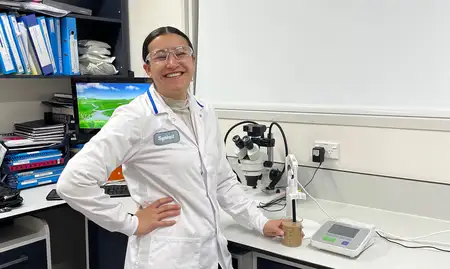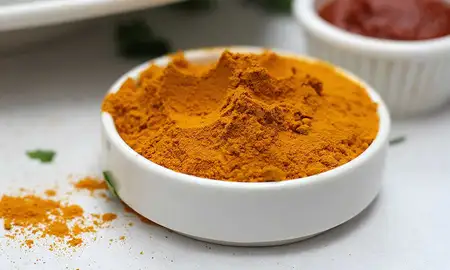
The pith from the New Zealand black tree fern, also known as Mamaku, has been traditionally used by Māori for treating skin conditions and gastrointestinal complaints, or simply consumed as food. Dr Akshay Bisht set out to gain a better technical and physiological understanding of the gum found in the pith and provide a foundation for creating a food ingredient with proven beneficial human health effects.
Dr Bisht says he employed an interdisciplinary approach to gain a better understanding of how to use Mamaku in the food industry.
“My research explored Mamaku from its origins in the forest to its potential impact on gut health, and addressed critical questions such as what is a sustainable way of harvesting Mamaku without compromising its unique shear-thickening behaviour, how to process Mamaku in industry, how Mamaku gum can be delivered safely to humans, and how it affects digestive enzymes and colonic microbes.”
Dr Bisht went on to develop a natural shear-thickening functional food ingredient and showed that its anti-glycemic effects could potentially help manage the diabetes epidemic.
“This ingredient can be further used to design the next-generation of novel food products aiming to help with safe swallowing, satiety management, reduced blood glucose peak and improved colon health. This may be helpful for people with dysphagia, obesity, diabetes and irritable bowel syndrome, but requires further investigation.”
Growing up in India, Dr Bisht had a strong desire to give back to society and was motivated to work in the diabetes field as India is one of the countries most affected by the diabetes epidemic.
He also notes that understanding more about Mātauranga Māori through his PhD project was a highlight, especially because of the parallels with his home country.
“In India, we use a lot of household remedies based on Ayurveda, an indigenous knowledge system for managing health. Learning about Mātauranga Māori and cross-cultural exploration added an enriching dimension to my research.”
Dr Bisht’s PhD demanded a very diverse and complex skill set.
“I used research fields such as polymer characterisation, rheology, powder technology, in vitro digestion and fermentation models, bioinformatics and clinical trials. One of the reasons I could finish my PhD on time with high-quality research was because of the expertise of those within food technology, food engineering and nutrition and health within the School of Food and Advanced Technology.”
“I am grateful to my family and friends for the motivation they gave me throughout my PhD. I am also thankful to Associate Professor Lara Matia-Merino and Associate Professor Kelvin Goh, as well as Dr John Monro from the New Zealand Institute for Plant and Food Research, for their encouragement and guidance.”
Dr Bisht’s PhD thesis was included on the Dean’s List of Exceptional Theses. He will be joining the Department of Human Nutrition and Dietetics at the University of Hohenheim, Germany as a Postdoctoral Fellow.
Related news
Novel wool-derived protein a potential key to improving type-2 diabetes management
New research has provided insight into the functional potential of wool-derived protein, with an initial trial revealing it can influence how the body responds to insulin.

Food tech grad making a career out of milk
Food technologist Zara Beckingsale, Ngāpuhi, Tūhoe, picked her career out of a book, despite never having heard of the job before.

Study to investigate health impacts of turmeric
Auckland men have the chance to take part in a study investigating the impact of turmeric on inflammation and metabolic health.
